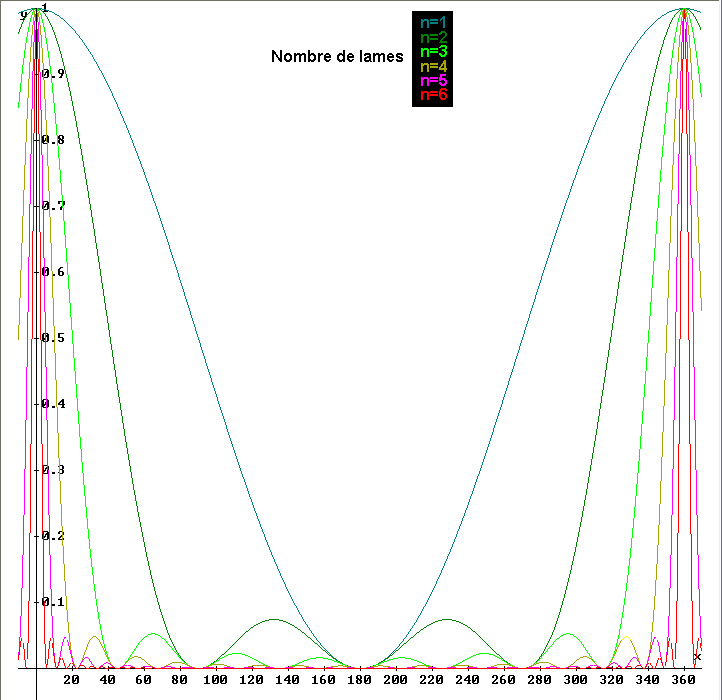Polarizer of entry of matrix  delivering
at exit a vecteuR
delivering
at exit a vecteuR
![]()
Birefringent blade directed with 45° of the
polarizer, centers slow on the first bisectrix of the starting
reference mark giving a dephasing of
![]() .
.

with
DT
the temporal delay of the slow vibration on the fast
vibration at the time of the crossing of the thinnest blade of the
filter thickness D and the central wavelength L of the filter ![]() is the speed of
the light in the vacuum, finally
is the speed of
the light in the vacuum, finally ![]() is the ordinary
index (fast axis) of the crystalline blade and
is the ordinary
index (fast axis) of the crystalline blade and ![]() is the
extraordinary index (slow axis) and
is the
extraordinary index (slow axis) and

and thus

one thus has for the first stages the matrix of Jones,

One reconnait in the member of left of the equality
above, successively of right-hand side on the left, the matrix of the
rotation of angle
![]() then the matrix of the blade, and
finally the matrix of the rotation of angle
then the matrix of the blade, and
finally the matrix of the rotation of angle ![]() .
These two matrices of rotation make it possible to work in the
reference mark consisted the two axes of the crystalline blade, the
fast axis being the x-axis and the slow axis the y-axis. In
these axes the matrix of Jones of the blade has the simple form
mentioned above. The member of right-hand side is thus the
matrix of Jones of the blade of the first stage of
the filter of Lyot in the reference mark whose axes have
the direction of the polarizer of exit for x-axis and the direction of
the polarizer of entry for y-axis (it is pointed
out that these two polarizers are cross).
.
These two matrices of rotation make it possible to work in the
reference mark consisted the two axes of the crystalline blade, the
fast axis being the x-axis and the slow axis the y-axis. In
these axes the matrix of Jones of the blade has the simple form
mentioned above. The member of right-hand side is thus the
matrix of Jones of the blade of the first stage of
the filter of Lyot in the reference mark whose axes have
the direction of the polarizer of exit for x-axis and the direction of
the polarizer of entry for y-axis (it is pointed
out that these two polarizers are cross).
The vector of Jones at exit east thus

and after the polarizer of exit of matrix
the vector of Jones of the vibration of exit east

of complex amplitude

The intensity at exit of the first stage is equal to the square of the module of the vector of exit which we have just obtained, that is to say








